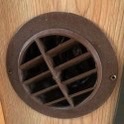NOTICE OF RISK: This article is for information purposes only. Damage can be done to your RV if any repair is not done properly. Blue Skys RV Park takes no responsibility for any damage that occurs to your property while attempting these repairs.
How Do You Repair An RV Furnace?
Knowing how to repair and maintain your RV furnace can extend your camping season and save you money. Check out this guide to learn how to fix an RV furnace.
Safety disclaimer: It’s important to note your RV furnace operates using propane and electricity, two potentially dangerous sources. If you are not confident in working with either, allow a professional technician to take care of the repairs.
Sequence of operations
First, to know how to potentially fix your furnace, you need to know how it operates. On the surface it seems very basic; it gets cold so you turn the thermostat up and presto, the furnace starts and you have heat. Simple, right?
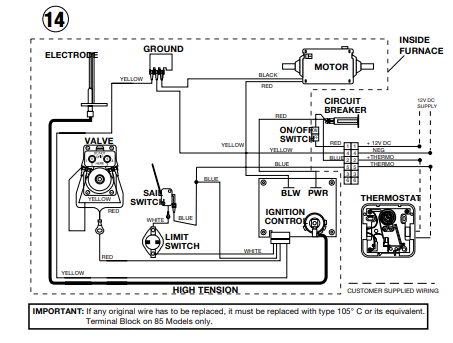
Wiring schematic from Atwood
Notes about the circuit board
The circuit board on your furnace will most likely have a light that indicates errors. Certain flashing patterns will indicate the problems to start looking for. This, combined with the actions or the inactions of the furnace, will put you on the right track.
Any obvious dark burnt spots on the board could mean a bad board. Any issue involving any of the parts discussed below in which the part itself tests okay indicates a likely problem with the circuit board or wires running between it and the part.
With lots of different parts and operations, how then do we know what we need to fix? Let’s look at some common situations.
1. No response from the furnace
Situation: You call for heat on the thermostat and nothing happens from the furnace.
12V power
Your RV requires a strong 12V power supply for the proper operation of various components in the furnace.
Action: Check all the connections along the wire from the thermostat to the circuit board and confirm you have a strong 12V power supply from your RV’s batteries.
Relay & blower motor
Next possibility is the relay for the blower. Should the relay not open, the blower will not start.
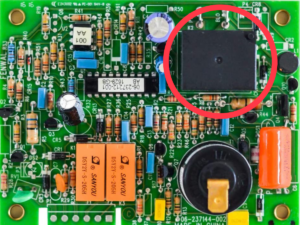
Circled is the relay on a circuit board
Action: Test the relay by bypassing it so the fan is running off of direct power. If your fan operates with direct power then the fan is good and it is likely the relay. If the fan doesn’t run on the battery power, then the fan is the problem and your relay is likely fine.
2. The fan comes on but the furnace doesn’t fire
Situation: You hear the fan start but the furnace doesn’t fire. There might be air blowing from the furnace but it isn’t warm air.
Remember from the sequence of operations that the blower has to be running at full speed to activate the sail switch. A strong 12V power supply is required to make this happen.
Sail switch & high-level switch
First, check the sail switch. Dirt, pet hair, and foreign objects can affect the operation of the sail switch. The sail switch is usually mounted to the outside of the blower.
Action: Clean the blower fins and sail switch and retest. If they are clean and the furnace doesn’t come on, you can test the sail switch with a multimeter.
Another situation (although unlikely) is the high-level switch. The sail switch and high-level switch are wired in sequence. Without the furnace firing, it’s unlikely that in this scenario that this is your problem. The high-level switch is activated by heat. Therefore, no fire, no heat.
Gas valve
Next check is the gas valve. You should hear the solenoids on the valve when it attempts to open (it sounds like a click). If you don’t hear the solenoids this is a good sign it is not working.
It is possible to hear the solenoids and have the valve not open. You should smell propane, and often you can hear the gas as a result of its opening.
Action: Remove and check the gas valve by running power directly to it. When open, you should be able to blow air through it.
Ignitor & ignition module
The next possible component is the ignitor. As the gas valve opens you should hear the fast ticking of the ignitor. If you don’t hear this, the issue is likely with the ignition.
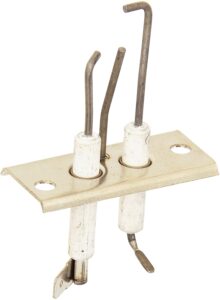
Suburban ignitor from Amazon
Action: Confirm with a multimeter that there is power from the ignition module on the circuit board to the ignitor. If not, the module on the board may be bad. If you have power, double check the ignitor tips. Ignitor tips should be clean and properly spaced for the spark to jump between them. The ceramic insulation should be free from cracks or debris.
3. The furnace shuts off prematurely after firing and producing heat
Situation: The furnace starts and you have heat but it shuts off before getting to the set temperature.
High-level switch
Should the temperature in the combustion chamber reach a certain temperature, the high-level switch will shut down the furnace. There are a couple of possible reasons for this: a leak in any of the tubes in the combustion chamber can create excess heat or improper exhausting of hot air.
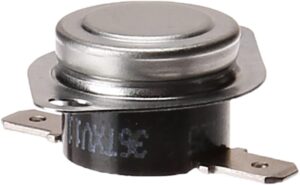
Atwood high-level switch from Amazon
